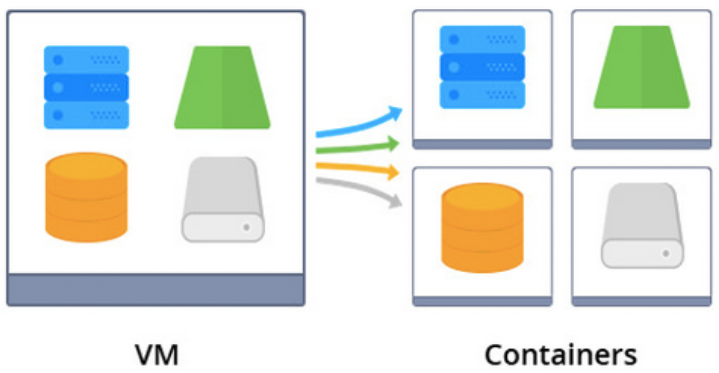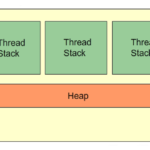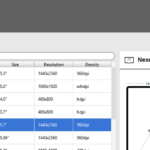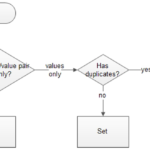This article gives tips on how to reduce hosting costs by using container technology for Java applications.
With the size of the growing project, the space requirements also increases. System containers may offer affordable and manageable vertical space. The legacy applications can be migrated from VM to containers without updating its existing settings. The Java applications can be vertically scaled up by Java configuration and the garbage collector. For cloud service, the efficiency can be increased and utilized properly by pay as per your use strategy. This article is written to let you know how you can determine and pay only for the used resources without compromising the performance, through the following sections:
- Are you overpaying for your VM?
- Garbage Collector
- Virtual Machine to Container Migration
Three Ways to use the Cloud efficiently
The cloud vendor, which you choose may offer you “pay as per your use” pricing model, in which he may charge as per your consumption. In such models, the service may start with only a small server and the number of servers may be increased on demand, but still, in this case, the exact size may differ and depend on your requirement. It is called “pay as per your need” model but here the number of servers is increased by the vendor if the requirement becomes higher and the total increased size is doubled from the previous one and you may have to pay either for extra space or may have to compromise the performance. Through container technology, you may not need to pay extra and may use your VM as per your requirement. In such cases, the application is run inside the container.
Use of Virtual Machine Technology
Every cloud hosting service provider offers various sizes virtual machines and from that, you may have to choose the right size as per your requirement. The VM, which you choose for your application must not be too small or too big. Choosing the low-sized can result into downtime events during the peak time. The big-sized on the other hand can be a waste of money and resources. To the clients generally the following types of virtual machines are offered:
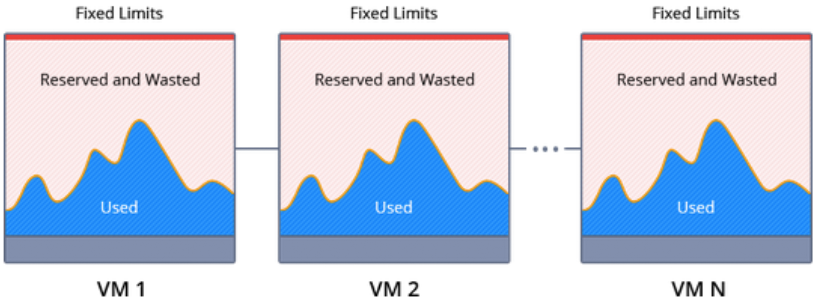
Wasted resources on virtual hosting (image courtesy infoq.com)
In case you want to increase the size of your virtual machine, then the offered size may be the double of the existing one only, like if you are using 3.75 GB, then the offered size will be 7.5 GB and for the users, who are using 7.5 GB, the size will be 15 GB. Here, it is clear that the virtual machines are not flexible and efficient enough to handle the requirements, due to which the customer may have to overpay for their data usage.
Garbage Collector
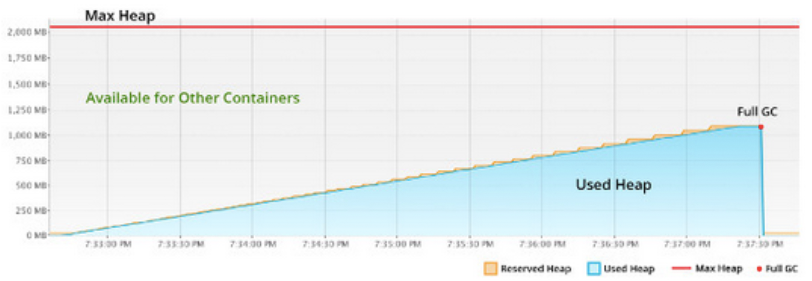
Full Garbage Collector (image courtesy infoq.com)
In order to use the container technology, you may need to activate the JVM properly. Java’s garbage collector should be activated, so that it can provide you with free memory at run-time. Through garbage collector, the unused memory is released and provided to the operating system. The GC packages the live objects and releases unused memory by releasing the used memory, which is not in use. In case of nonshrinking GC the applications hold all committed RAM, so cannot be scaled up vertically. The GC of Java 8 is inefficient so cannot be expanded vertically, while garbage first can scale up easily vertically, so can be efficiently used by applications. The combination of G1 and container technology becomes highly efficient.
Virtual Machine to Container Migration
Basically, two types of containers are there, which is known as application container and system container. Among these two types of containers, the application container can run a single process whereas the system container behaves like an operating system and can be used to execute system related commands. With the help of enough experience and usecases, the virtual machines can be easily transferred or migrated to containers without using coding and redesigning of the existing application.
In case of any legacy or monolithic application, you may have to reuse the architecture and configuration, used in the original application and the issues like incorrect memory or the memory limits can be easily determined. A separate container is used for each component of the application and the topology of the application can be easily simplified and managed. The containers even can help to get rid of the unnecessary application components, like in case of any Web Logic Server application, the virtual machine is used for three instances, including administration server, managed server and node manager but the use of containers may eliminate the use of node manager.
Final Words
To host your Java-based web application, whose size is unpredictable it is good to use the container technology so that you may not have to compromise the performance and at the same time you can save a big amount as well. You can ask your cloud hosting service provider and can have the best performance by not even overpaying for your application hosting.
This article was kindly provided by JanBask Training. They are offering all type of Java Question and Answers session and Online Java Training. For more information please check their website and pick a Java training according to your needs.
